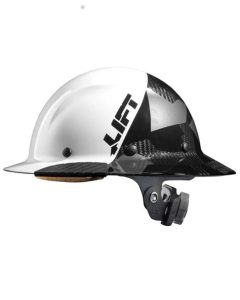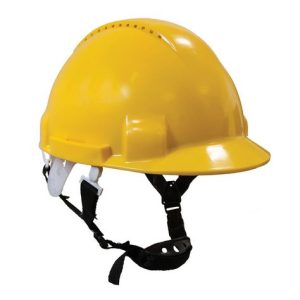Apr 18, 2024
Safety Helmets: Protecting Your Head During Activities
Safety helmets are essential gear for many activities that carry a risk of head injury. From cycling and skateboarding to construction and sports, helmets play a vital role in protecting your head from impact. This comprehensive guide will explore everything you need to know about safety helmets, from different types and their uses to finding the right fit and ensuring proper care.
Why Wear a Safety Helmet?
Safety helmets are designed to absorb impact, reducing the force transmitted to the head in the event of a fall, collision, or other mishap. Here are some specific benefits of wearing a safety helmet:
Reduces Risk of Serious Injury:
Helmets significantly lower the risk of severe head trauma, including skull fractures and brain injuries.
Protects from Falling Objects:
In some environments, helmets can shield your head from falling objects or debris.
Provides Peace of Mind:
Knowing you’re wearing a helmet can give you more confidence and allow you to focus on enjoying your activity.
Types of Safety Helmets
There are various types of safety helmets designed for specific activities. Here’s a look at some common types:
-
Bicycle Helmets: These lightweight helmets are designed for comfort and ventilation during cycling.
-
Skateboard Helmets: Similar to bike helmets, skateboard helmets provide protection for falls and bumps while skateboarding.
-
Motorcycle Helmets: These helmets are much sturdier than bike helmets and offer full head protection for motorcycle riders.
-
Construction Helmets: Hard hats are essential safety gear for construction workers and anyone at risk of falling objects.
-
Sports Helmets: Various sports have specific helmets, including baseball helmets, football helmets, and hockey helmets, each designed to protect against the unique risks of that sport.
Choosing the Right Helmet
Here are some key factors to consider when choosing a safety helmet:
-
Activity: Select a helmet specifically designed for your chosen activity. The type of activity will determine the level of protection needed.
-
Fit: Proper fit is crucial! The helmet should sit snugly on your head without rocking or moving excessively.
-
Comfort: Choose a helmet that feels comfortable to wear. You’re more likely to wear it consistently if it’s comfortable.
-
Compliance: Ensure the helmet meets the required safety standards for your activity. Look for labels indicating compliance with relevant safety certifications.

Wearing Your Helmet Properly
Here are some tips for wearing your helmet correctly:
-
Adjust the straps: The straps should form a Y-shape under your ears and feel snug but comfortable.
-
Position the helmet: The helmet should sit level on your head, covering your forehead comfortably.
-
Tighten the chin strap: The chin strap should be secure enough to prevent the helmet from moving excessively in the event of an impact.
Safety Helmet Care and Maintenance
Proper care of your safety helmet can extend its lifespan and ensure it functions effectively. Here are some basic care tips:
-
Store Properly: Store your helmet in a cool, dry place away from direct sunlight and extreme temperatures.
-
Clean Regularly: Wipe the helmet shell clean with a damp cloth and mild soap. Remove any dirt, sweat, or debris.
-
Inspect for Damage: Regularly inspect your helmet for cracks, dents, or loose components. If you find any damage, replace the helmet immediately.
Safety Beyond Helmets
While safety helmets offer valuable protection, they are not foolproof. Here are some additional safety tips to consider:
-
Follow safety guidelines: Always adhere to safety regulations and recommended practices for your chosen activity.
-
Use additional protective gear: In some activities, additional protective gear like knee pads, elbow pads, or wrist guards may be recommended.
-
Be aware of your surroundings: Stay alert and focus on the activity at hand to minimize the risk of accidents.
Safety helmets are a simple yet vital measure to protect yourself during various activities. By understanding the different types, choosing the right fit, and wearing it properly, you can significantly reduce the risk of head injury. So, gear up, stay safe, and enjoy your activity!

The Fun Part: Helmets and Different Activities
Safety helmets come in all shapes and sizes, and can add a bit of fun and personality to your favorite activities! Here are some examples:
Cycling:
Helmets come in various colors and designs to suit your style. Reflective elements can enhance visibility during low-light rides.
Skateboarding:
Express yourself with graphic designs or customize your helmet with stickers. Remember, even the coolest helmet won’t protect you if it doesn’t fit properly!
Winter Sports:
Helmets for snowboarding and skiing often come in vibrant colors, making it easier for your friends to spot you on the slopes. Some even integrate audio systems for listening to music or podcasts.
Helmets and the Law
In many places, safety helmets are mandatory for certain activities by law. Here are some examples:
-
Bicycle Helmets: Many localities have laws requiring cyclists under a certain age to wear a helmet.
-
Motorcycle Helmets: All motorcycle riders and passengers are required by law to wear a helmet in most jurisdictions.
-
Construction Hard Hats: Hard hats are mandatory on construction sites to protect workers from falling objects.
Helmets Save Lives
The most important takeaway about safety helmets is that they save lives! Here are some statistics to emphasize their importance:
-
According to the National Highway Traffic Safety Administration (NHTSA), helmets saved an estimated 1,500 lives of motorcycle riders in 2020 in the United States.
-
The Centers for Disease Control and Prevention (CDC) reports that wearing a bicycle helmet can reduce the risk of head injury by 88%.
Safety helmets are a no-brainer when it comes to protecting yourself during various activities. With the right fit, proper use, and a little awareness, you can participate in your favorite sports and hobbies with confidence. So, gear up, have fun, and be safe!
Helmet Recycling and Disposal
Safety helmets have a limited lifespan. Here’s what to consider when a helmet needs replacing:
-
Visible damage: Cracks, dents, or deep scratches indicate the helmet needs replacing.
-
Expired lifespan: Some helmets have a manufacturer-specified lifespan. Replace the helmet after this time even if it appears undamaged.
-
Improper fit: If a helmet no longer fits your child properly, it’s time for a new on
Don’t throw away your old helmet! Many communities have helmet recycling programs. Check with your local waste disposal service or sporting goods stores about helmet recycling options in your area.